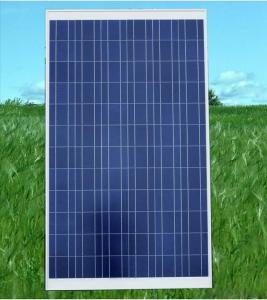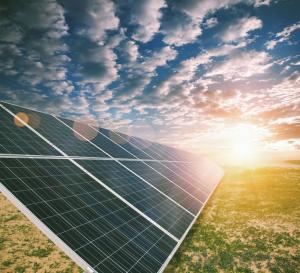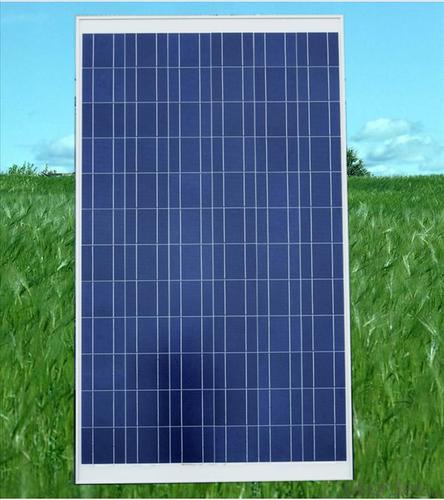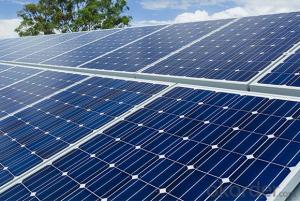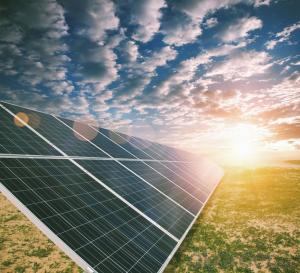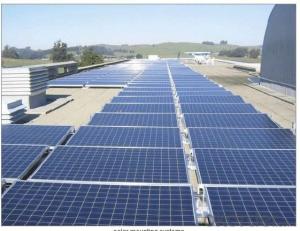Florida Power and Light Solar Panels - CNBM Solar Polycrystalline 6 Series (80-85W)
- Loading Port:
- China main port
- Payment Terms:
- TT OR LC
- Min Order Qty:
- 100000 watt
- Supply Capability:
- 10000000 watt/month
OKorder Service Pledge
OKorder Financial Service
You Might Also Like
About us
CNBM International Corp, established in 2004, is the business entity for trade and logistic of CNBM Group.With the advantages in Cement, Composite Materials, New Building Materials and Engineering, CNBM mainly concentrate on coal, steel and construction equipments and give priority to solar and wind energy development.CNBM International is highly recognized by its business partners and clients all over the world and has established good business relationship with the customers in over 120 countries and regions all over the world.
Process Description
Mono-crystalline solar module is the core part of solar power systems, as well as the most important part of the solar system. Mono-crystalline solar module consists of high efficiency crystalline silicon solar cell, super white cloth grain toughened glass, EVA, transparent TPT backboard and the composition of aluminum alloy frame. The function of Mono-crystalline solar module is to convert solar energy into electric energy, or sent to the storage battery, or promote work load. The quality of the solar energy battery components and cost will directly decide the quality and cost of the whole system.

Data sheet
| Characteristics | |
| Max Power Voltage Vmp (V) | 17.4V |
| Max Power Current Imp (A) | 4.60A-4.89A |
| Open Circuit Voltage Voc (V) | 22.4V |
| Short Circuit Current Isc (A) | 4.91A-5.22A |
| Max Power Pm (W) | 80W-85W |
| Temperature Coefficient of Cells | |
| NOCT | 47℃±2℃ |
| Temperature Coefficients of Isc (%/℃) | 0.06% |
| Temperature Coefficients of Voc (%/℃) | -0.33% |
| Temperature Coefficients of Pmp (%/℃) | -0.45% |
| Mechanical Data | |
| Type of Cells (mm) | Poly156×89.1 |
| Dimension | 870×670×30mm |
| Weight | 6.5kg |
| NO.of Cells and Connections | 4×9=36 |
| Limits | |
| Operating Temperature | –45°C to +80°C |
| Storage Temperature | –45°C to +80°C |
| Max System Voltage | 700V |
FAQ:
1. How long will my inquiry get response?
Your inquiry related to our products or prices will be replied within 24 hours.
2. Can I get professional service and suggestion?
Well-trained and experienced staffs to answer all your questions in fluent English.
3. Do you accept OEM or customized design?
OEM & ODM, any your customized lightings we can help you to design and put into product.
4. What if I need specific design?
Distributorship are offered for your unique design and some our current models.
- Q: What is the efficiency of modern solar panels?
- The efficiency of modern solar panels varies, but on average, it ranges from 15% to 20%. Some high-end panels can achieve efficiencies of up to 25%. However, it's important to note that the efficiency of solar panels is constantly improving as technology advances.
- Q: I am researching several solar panels to install in my house. I would like to use a 40 watt panel to connect, through a solar battery controller, to a battery or two. I would then like to use the solar panel (40 watts) to charge the battery(ies) for emergency use. Once charged, and when needed, I would like to use the battery(ies), 2 volt deep cycle, to power several LED lamps. Since I am new to solar power I had several questions...Is a 40 watt panel strong/large enough to charge a 2 volt deep cycle battery or two?How long would it take to charge one of these batteries?What would be the expected cost to purchase necessary supplies? (With the solar panel, battery controller, and MC4 cabling I've found I have an expected cost of roughly $00.00 with batteries)Would this be difficult for someone with little experience in this field?
- Your demand is high. You require at least 5KVA (5000watts) out put with an appropriate battery storage and inverter..
- Q: My house uses 500 kw a month, air conditioning is the main consumer, is it possible to install solar panels in my roof to produce this amount, and aproximate cost, thanks .
- I assume you mean 500 KWH (Kilowatt Hours) A good panel may produce about 00Watts. It will cover about 2SQ FT. Lets say you have a ranch style house that is 2000 SQ FT. That means if you covered your entire roof with panels, you could get about 65 panels on the roof(Not really, because you need room to get around them. Lets say practically you could get 00 panels on the roof. You could produce 00X00, or 0,000 Watts/hour (0 KW/HR)when the sun is at peak. Each hour you would produce 0 KW HR's. Lets say your area is perfect and the sun shines bright 0 hours a day, so You could potentially produce 00 KW HRS. There are losses envolved in the wiring, Battery Charger, Storage Batteries, and rectifier-controller. Maybe more realistically you could get 70 KW HRS per day. Maybe you could get 500 KWH in about 2 days. Each panel will cost about $500-$700. Panels alone will be over $50,000. The entire system installed about $00,000. This should cover your electric at least during sunny times. If you live outside of Arizona, lots of luck. Still much cheaper to ude the grid.
- Q: Can solar panels be installed on a military vehicle or equipment?
- Yes, solar panels can be installed on military vehicles or equipment. In fact, several military forces around the world have already started incorporating solar panels onto their vehicles and equipment as a means of reducing reliance on traditional fuel sources and enhancing energy efficiency. This not only helps reduce carbon emissions but also provides a sustainable and reliable source of power for various operations and equipment on the field.
- Q: I need to reduce the average monthly home electricity bill by powering some of the household appliances using solar panels. Can I use a 250 watt solar panel to power a medium sized upright fridge?
- Well you might reduce your bills, but you wont get your capital back for many years. Do you have LED lighting, I have, every-time one of my compact flourescent bulbs blew I would replace it with an LED, after two years most of my lighting is LED, a good investment I think. What devices do you have, heating and cooking is better with gas (much cheaper) Think about better insulation for wintertime.
- Q: Can solar panels be used to power an air conditioning system?
- Yes, solar panels can be used to power an air conditioning system. Solar energy can be converted into electricity, which can then be used to power various appliances including air conditioning units. By harnessing the power of the sun, solar panels can provide a sustainable and cost-effective solution for cooling homes and buildings.
- Q: Can solar panels be installed on a streetlight?
- Yes, solar panels can be installed on a streetlight. This allows the streetlight to be powered by solar energy, reducing reliance on the electrical grid and contributing to a more sustainable and cost-effective lighting solution.
- Q: So you know how the bigger the surface area exposed to the heat radiation means the quicker it'll heat up.Is this what happens with solar panels, they have a large surface area exposing to the sun, so they can get more heat?
- Solar panels do heat up. But that's because the radiant energy from the Sun that lies within the infrared (IR) band of energy causes the material in the panels to heat up. And that's the same for any body that has the Sun shine on it. Your face, for example, will heat up while you get a nice tan on the beach. That's due to the heat producing IR radiant energy. Now if those solar panels are supposed to heat buildings etc., that heat produced in the panels when the IR strikes them will be transferred, usually by some fluid, to floors of the rooms to be heated. And as the amount of heat generated by the Sun is proportional to the area of the solar panels, bigger areas of panel will generate more heat than smaller areas. Photoelectric solar panels are another kind. Here the interest is in the visible band of radiant energy from the Sun. Heat, from IR, is still there, but it is not the product sought by PE solar panels. The visible light photons knock off loosely bound electrons from the photoelectric material (typically silicon based) and those electrons are siphoned off as current. That's where the electrical power comes from for buildings using PE solar panels to provide their own electricity.
- Q: Can solar panels be used in areas with high levels of shade or obstruction?
- Solar panels can still be used in areas with high levels of shade or obstruction, but their efficiency and performance may be significantly reduced. Shade or obstructions like tall buildings, trees, or nearby structures can block sunlight, preventing the panels from receiving the necessary amount of light to generate optimal electricity. However, there are advanced technologies and design techniques available that can mitigate the impact of shading, such as using micro-inverters, optimizers, or tilting and positioning the panels to maximize sunlight exposure. Overall, while solar panels can still function in shaded areas, it is crucial to assess the level of shading and its potential impact on energy production before installation.
- Q: Can solar panels be used for charging electric vehicles?
- Yes, solar panels can be used for charging electric vehicles. Solar panels convert sunlight into electricity, which can be used to charge the batteries of electric vehicles through a charging station or directly through a solar-powered carport. This provides a sustainable and renewable source of energy for electric vehicle charging.
Send your message to us
Florida Power and Light Solar Panels - CNBM Solar Polycrystalline 6 Series (80-85W)
- Loading Port:
- China main port
- Payment Terms:
- TT OR LC
- Min Order Qty:
- 100000 watt
- Supply Capability:
- 10000000 watt/month
OKorder Service Pledge
OKorder Financial Service
Similar products
Hot products
Hot Searches
Related keywords
